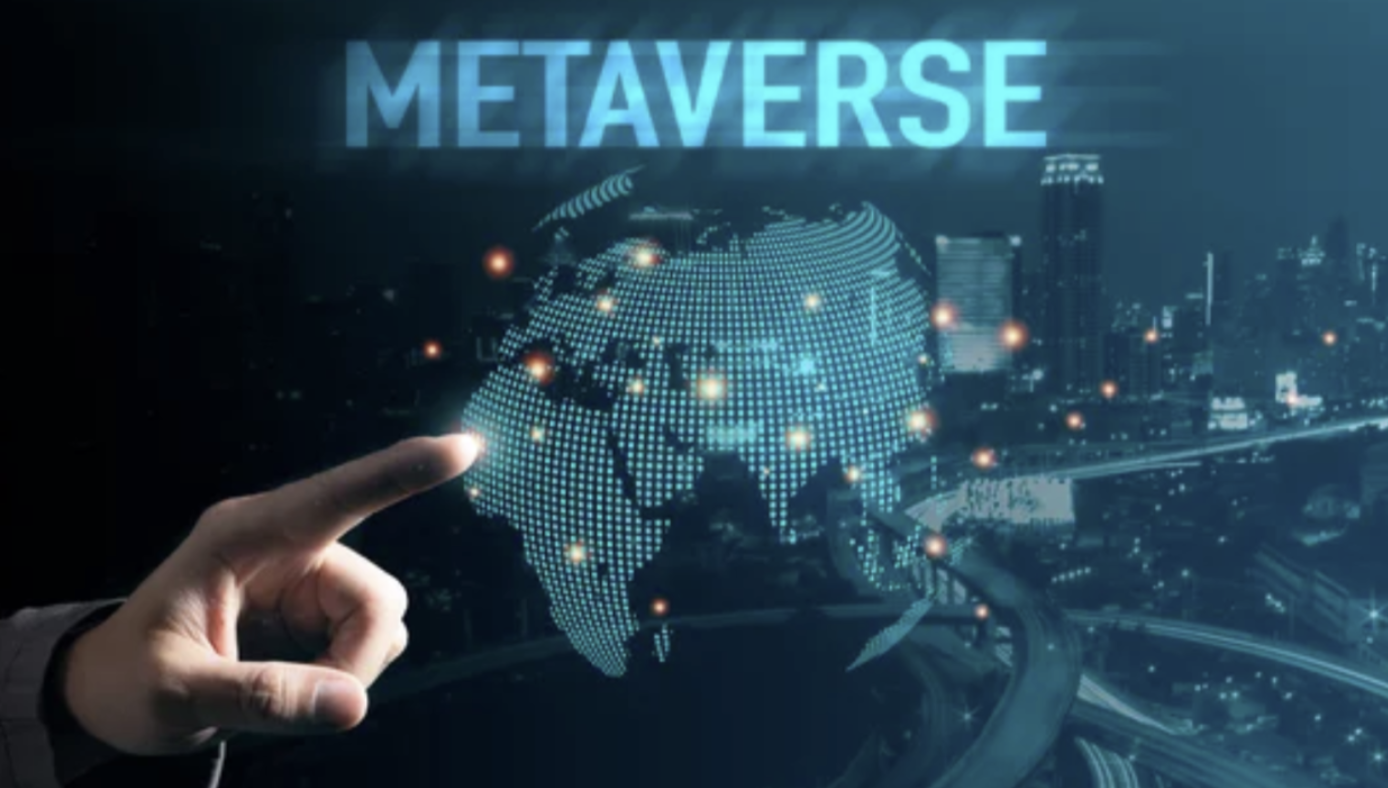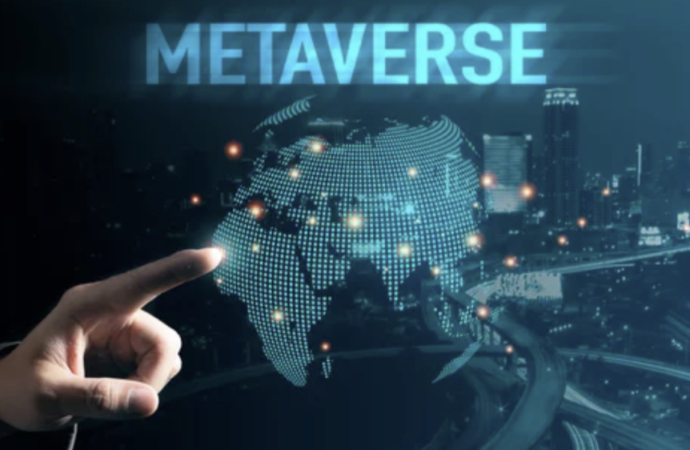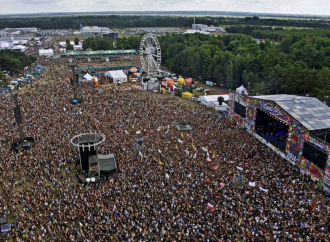In recent years, the term “metaverse” has taken the spotlight, capturing the public’s attention. At its core, the metaverse refers to digital, often virtual or augmented reality spaces where people can interact, socialize, play games, and even conduct business. Imagine it as a massive, never-ending online world—similar to a video game—where users can create experiences,

In recent years, the term “metaverse” has taken the spotlight, capturing the public’s attention. At its core, the metaverse refers to digital, often virtual or augmented reality spaces where people can interact, socialize, play games, and even conduct business. Imagine it as a massive, never-ending online world—similar to a video game—where users can create experiences, design digital homes, and even buy virtual land. Some see it as the next big step in the evolution of the internet, a space not just for consuming content, but for actively participating in it. This is where metaverse real estate comes into play. Much like physical property, it involves purchasing virtual land, developing it into something like a store, gallery, or mansion, and potentially selling it for profit down the road.
But is this growing interest valid, or is it just a speculative bubble waiting to burst? Some believe it’s a goldmine, pointing to million-dollar sales of digital properties, while others remain cautious, suggesting that these prices may not be sustainable. In this article, we’ll break down how metaverse real estate works, why it’s generating so much buzz, how major brands are getting involved, and whether it’s all just a passing trend.
What Is Metaverse Real Estate?
When we talk about real estate in the metaverse, we’re referring to buying digital land in virtual worlds like Decentraland, The Sandbox, and others. These platforms let users buy, sell, and develop virtual land, similar to physical property. Each plot is linked to a non-fungible token (NFT) on a blockchain, which serves as proof of ownership. Once you own a plot, you can build structures, host events, create virtual storefronts, or design social spaces—anything you can imagine, as long as it follows the platform’s rules.
What sets metaverse real estate apart from traditional video games is its decentralized nature. Instead of a single company controlling everything, these platforms are typically governed by communities of users and token holders who have a say in decision-making. This gives users a sense of ownership that’s different from earlier, centralized video games, where players might spend money on in-game items but didn’t truly own them outside of the game. In the metaverse, your virtual land can be bought, sold, or traded across various markets, with its value rising or falling based on demand. Some people see it as a modern version of investing in Manhattan real estate—predicting huge profits as more people enter the metaverse. But others caution that it’s a risky investment, especially if the platform fails to attract long-term users.
Why Are Virtual Plots Selling for Millions?
You may have seen headlines about virtual land being sold for millions of dollars, and while it might seem strange, it’s true. So, why are people paying real money for something you can’t physically touch or step on? One reason is scarcity. Much like physical cities, many metaverse platforms limit the number of available plots. Owning a prime location, like one near a popular virtual marketplace or a big brand’s headquarters, can be seen as a smart investment. It’s like securing the best corner in a busy city—where the foot traffic is highest.
Another reason is the excitement around the platform’s potential success. Early investors believe that as these platforms gain popularity, the value of their virtual properties will rise. For example, someone might buy land near a famous musician’s virtual concert venue, hoping the traffic generated by events will increase the plot’s value. High-profile deals in platforms like The Sandbox, Decentraland, and CryptoVoxels have caught the public’s attention, with major buyers like Republic Realm and tokens.com getting involved. One notable sale in Decentraland in 2021 fetched over $2.4 million, sparking debates about whether this is the start of a major boom or just a speculative bubble. Some investors compare it to domain name investing in the ’90s—some hit it big, while others saw their investments fall flat. The question is whether this is truly the “Manhattan” of virtual real estate or just a passing trend.
Major Brands Enter the Metaverse
Big-name companies aren’t sitting on the sidelines. Brands like Adidas, Atari, and even luxury labels like Gucci are experimenting with metaverse projects—holding virtual fashion shows, launching NFT products, or buying their own virtual land. Gucci, for example, set up a virtual “Gucci Garden” in Roblox, and there are rumors that they’re exploring even more involvement in other platforms. Similarly, JP Morgan opened a virtual lounge in Decentraland. These moves signal a genuine interest in the marketing potential of these virtual spaces, aiming to engage younger audiences and experiment with new ways of selling digital and physical products. A well-designed brand presence in the metaverse can go viral, giving companies an innovative way to market themselves.
For virtual landowners, brand involvement is a double-edged sword. On one hand, major brand participation can stabilize the market and attract more users, which could drive up land values. On the other hand, if brands treat the metaverse as a passing trend or if users push back against commercial encroachment, it could lose its appeal. Right now, these moves are still experimental, but as virtual reality technology improves and younger generations embrace digital spaces, these brand expansions could shape the future of metaverse culture and economies.
The Digital Lifestyle Trend: Is It More Than Just a Fad?
The surge in metaverse real estate is also linked to the growing popularity of NFTs and digital ownership. People are not only buying land but also collecting digital art, avatar accessories, and in-game items. For many, especially younger people, owning digital assets has become a new way to express themselves and interact with others. During the pandemic, for example, online interactions became more important as people hung out with friends in virtual spaces, attended virtual concerts, and decorated their avatars’ homes. Investing in metaverse land might not just be about making a quick profit—it’s also about creating a space for personal expression, hosting events, or renting it out to others.
However, skepticism remains. Critics compare the metaverse to past economic bubbles, like the dot-com or housing bubbles, where hype inflated the value of intangible assets. They argue that real estate in the physical world has intrinsic value based on its utility, such as for living or farming. But in the metaverse, land’s value depends entirely on the popularity of the platform. If the platform loses users or fails to improve its features, a plot of land could become worthless. While some see the metaverse as a new frontier, others believe it’s a speculative bubble. Platforms like Decentraland, for example, have shown user numbers that don’t always match the high prices of land—raising questions about whether demand will be sustainable.
Environmental and Social Concerns
It’s also important to consider the environmental impact of the metaverse, especially for platforms that rely on blockchain technology like Ethereum. Although Ethereum upgraded to a more energy-efficient model in 2022, not all platforms have followed suit. If metaverse real estate becomes more mainstream, the increased transaction volume could lead to a rise in energy consumption. However, some platforms, like The Sandbox, are using Ethereum side chains to reduce fees and energy use.
On the social side, there are concerns that skyrocketing virtual property values could create a digital version of real-world inequality. Wealthy early investors may snap up the best locations, leaving regular users with less desirable plots. This could create “digital gated communities,” mirroring real-life issues with housing access. On the other hand, a decentralized approach might allow for more flexibility, such as renting or sharing land, which could make it more accessible to a broader range of users.
Is It All Speculation, or Are There Real Business Opportunities?
Many are wondering whether metaverse real estate is purely speculative or if it’s grounded in real business potential. There are some promising use cases:
- Event Hosting: Virtual concerts, art galleries, and brand launch parties can be hosted on your land, attracting paying visitors or sponsors.
- Advertising: Brands can place ads in high-traffic virtual areas.
- E-Commerce: Digital storefronts let avatars try on clothes or see products in 3D before ordering them in the real world.
- Co-Working Spaces: Virtual office spaces can be used by remote teams for meetings, turning your land into a profitable space.
While these applications are still in their early stages, some businesses are already making money by renting or developing land for these purposes. Investors in Decentraland, for example, offer “event designs” to companies looking to host virtual gatherings. As virtual land values rise, we could see more people “flip” their plots for profit, similar to real-world real estate flipping. However, the success of these ventures depends on the platform attracting enough users to sustain an active economy.
Goldmine or Bubble?
So, is metaverse real estate a goldmine or a bubble? The truth is, it’s probably somewhere in between. If the right platforms grow their user bases, enhance their features, and maintain user excitement, certain digital properties could see significant value appreciation. Big-brand involvement also suggests that some see long-term potential. Additionally, younger generations are increasingly comfortable spending money on digital assets like NFTs and in-game purchases, which supports the growth of this market. On the flip side, prices that outpace actual user engagement could signal a bubble. If a platform fades or loses its hype, landowners could be left with overpriced assets. We’ve seen similar trends in platforms like “Second Life,” where early excitement gave way to reduced interest.
That said, the combination of blockchain technology, virtual reality, and big-name support makes the current metaverse movement different from past trends. This wave might last longer than previous attempts. If you’re considering investing in virtual land, make sure to do thorough research. Check user stats, see if brands are ramping up their involvement, and look into the project’s roadmap. And remember, approach it as a high-risk investment—watch how the community grows, because the success of the metaverse depends on real people wanting to spend time there.
Metaverse real estate is an exciting frontier, blending cutting-edge technology with the age-old concept of property ownership. Whether it’s a lasting shift in how we interact online or another passing trend, the next few years will reveal its true potential. Brands, investors, and everyday users are all shaping this new world. If you’re intrigued, keep an eye on platform growth, brand partnerships, and new innovations to see what’s hype and what’s here to stay.

















Leave a Comment
Your email address will not be published. Required fields are marked with *